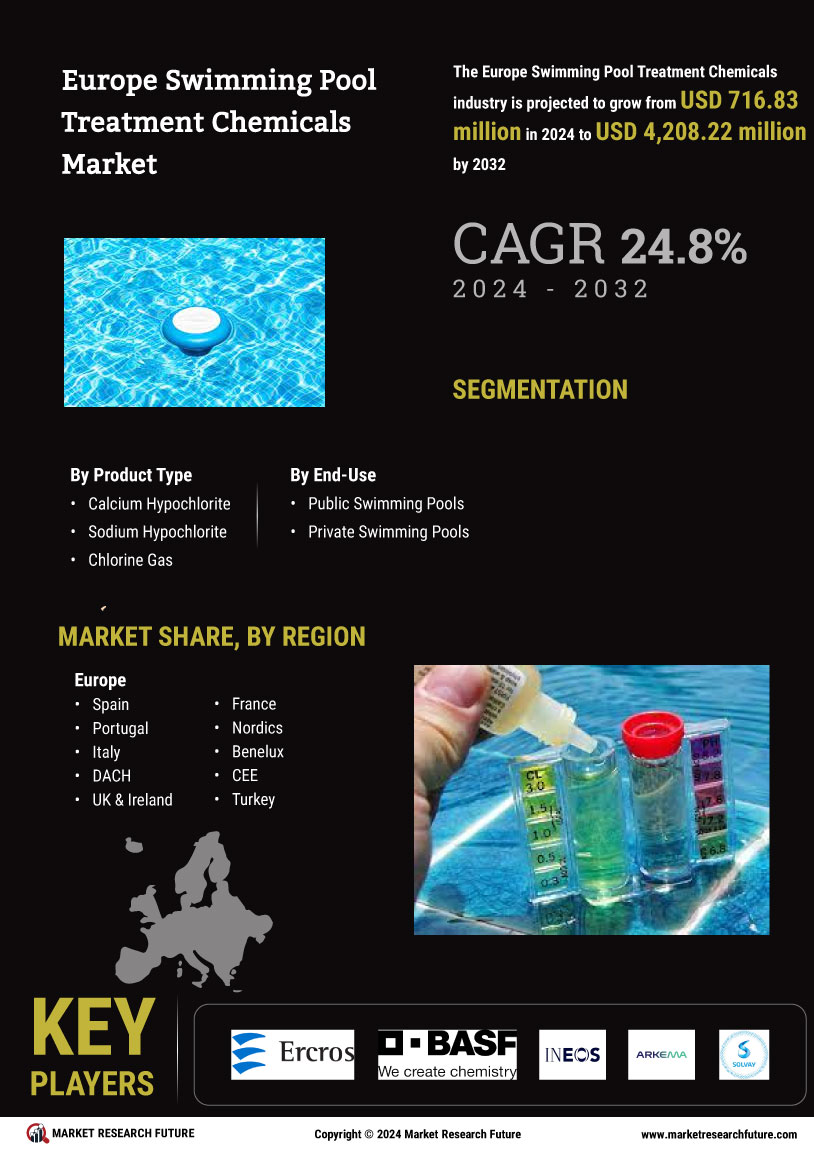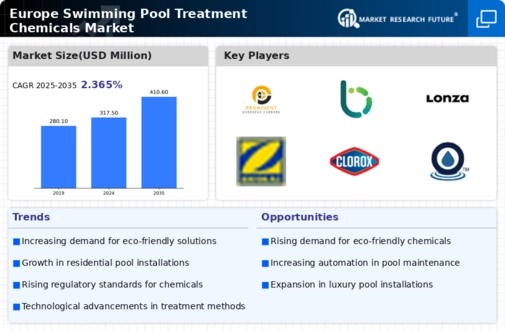The Europe Swimming Pool Treatment Chemicals Market is characterized by a diverse range of companies vying for market share, each offering varying products and services that cater to the growing demand for effective swimming pool maintenance solutions. As public and private pool facilities prioritize water quality and safety, the competitive landscape has evolved significantly, encompassing both established players and emerging startups. Companies in this sector compete on factors such as product innovation, pricing strategies, distribution networks, and customer service.
As a result, each firm is keenly focused on enhancing its value proposition to gain a competitive advantage in this expanding market. Hayward Industries has established a prominent presence in the Europe Swimming Pool Treatment Chemicals Market by providing a broad spectrum of high-quality products specifically designed for effective pool maintenance. The company is known for its strength in product development, featuring a lineup that includes chlorinators and doses that prioritize ease of use and efficiency. Hayward's commitment to innovation and sustainability resonates well with environmentally conscious consumers in the region, affirming its leadership position.
Moreover, the company's extensive distribution network across Europe enables it to serve various customer segments, ranging from domestic users to large commercial operators. By focusing on customer education and support, Hayward Industries has positioned itself as a trusted partner in pool maintenance, continually adapting to meet the evolving needs of the market. ProMinent is another key player in the Europe Swimming Pool Treatment Chemicals Market, recognized for its comprehensive range of water treatment solutions and cutting-edge technology. The company's offerings include state-of-the-art dosing systems, disinfection products, and automation solutions tailored specifically for swimming pools.
ProMinent has successfully capitalized on its strong R&D capabilities to introduce innovative products that improve water hygiene and management. With strategic mergers and acquisitions, ProMinent has expanded its presence in the European market, allowing for enhanced service delivery and product availability. This proactive approach has bolstered the company's strengths, making it a reliable choice for pool operators seeking effective treatment chemicals. The firm continues to prioritize customer satisfaction and sustainable practices, contributing to its robust reputation in the competitive landscape of the European swimming pool treatment chemicals market.




















